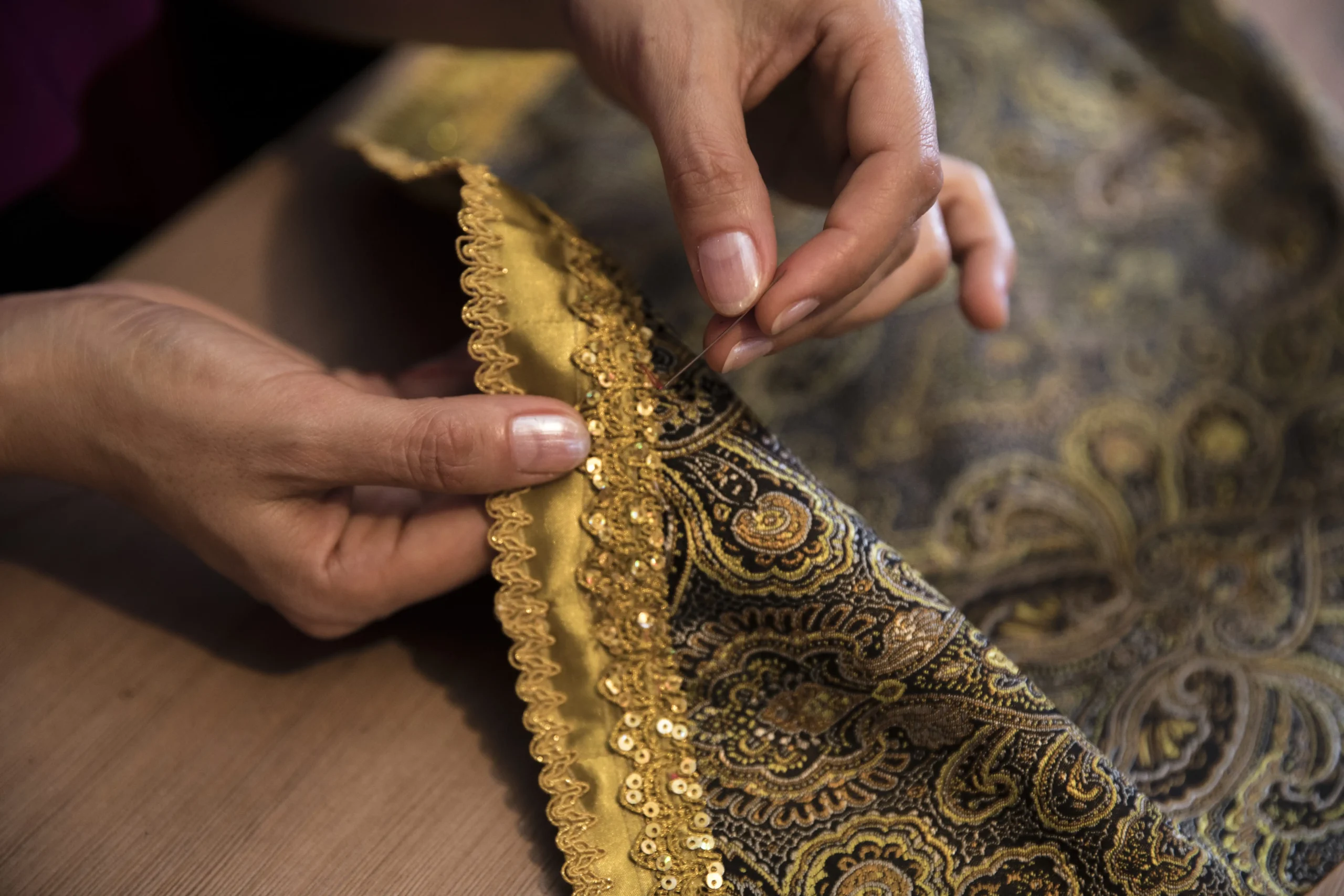

What is the Process of Crafting Handloom Sarees
Introduction
In the vast world of textiles, handloom sarees stand as a testament to the rich heritage and exquisite craftsmanship that transcends generations. At Woodloom, we take pride in curating a collection that not only showcases the timeless beauty of handloom sarees but also honors the meticulous process that goes into creating these masterpieces. Join us on a journey through the artistry of handloom saree-making, exploring the unique steps involved in the Process of crafting Handloom Sarees
1. Selecting Raw Material
The journey of a handloom saree begins with the careful selection of raw materials. Woodloom places great emphasis on choosing the finest threads, often sourced from the heartland of handloom sarees – Kerala. The quality of the yarn plays a crucial role in determining the durability, texture, and overall appeal of the final product.
2. Yarn Preparation
Once the raw material is acquired, the yarn preparation process begins. Skilled artisans at Woodloom engage in sorting, cleaning, and twisting the yarn to achieve the desired thickness and uniformity. This meticulous preparation lays the foundation for the subsequent stages of the handloom weaving process.
3. Hand Spinning
The traditional art of hand spinning is a hallmark of handloom saree-making. The yarn, now prepared, is skillfully spun by artisans who employ centuries-old techniques. This manual spinning process contributes to the unique texture and character of handloom sarees, setting them apart from mass-produced counterparts.
4. Dyeing Methods
Woodloom recognizes the significance of colors in handloom sarees. The dyeing process involves careful consideration of traditional methods, ensuring that the colors are vibrant, lasting, and harmoniously blend with the cultural aesthetics. This step not only adds visual appeal but also contributes to the handloom saree’s overall legacy.
5. Bobbin Winding
As the dyed yarn is ready for the loom, it undergoes bobbin winding. This process involves winding the yarn onto bobbins, ensuring that it is evenly distributed and ready for the weaving process. Attention to detail during bobbin winding is crucial for achieving the intricate patterns that define handloom sarees.
6. Warping and Weft Winding
Warping and weft winding are integral steps in the handloom weaving process. The warp threads are carefully arranged on the loom, providing the foundation for the saree. Simultaneously, the weft threads are woven through the warp to create the fabric. Woodloom’s artisans masterfully execute these steps, bringing precision and artistry to each handloom saree.
7. Handloom Designing
Handloom sarees are known for their intricate designs, often reflecting the cultural heritage of the regions they originate from. Woodloom collaborates with skilled designers who draw inspiration from tradition while infusing modern elements to create unique patterns that resonate with contemporary tastes.
Handloom Heritage
At Woodloom, we celebrate the rich heritage embedded in every handloom saree. Each piece tells a story of craftsmanship passed down through generations, making it more than just a garment – it’s a piece of art that connects the past with the present.
Conclusion
In the world of fashion, handloom sarees stand as a symbol of timeless elegance and cultural richness. Woodloom is committed to preserving and promoting the art of handloom saree-making, ensuring that each saree in our collection tells a story of heritage, craftsmanship, and enduring beauty. Explore the artistry of handloom sarees with Woodloom – where tradition meets contemporary style.
